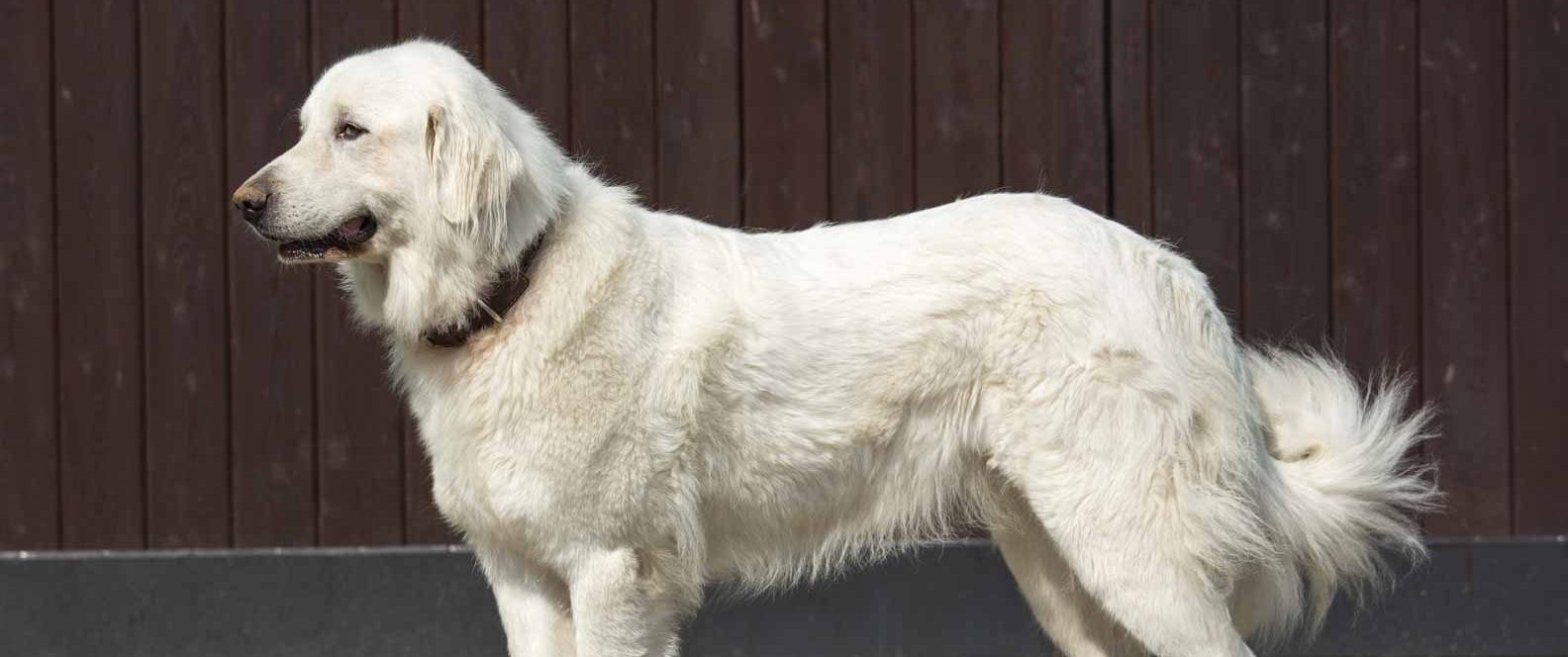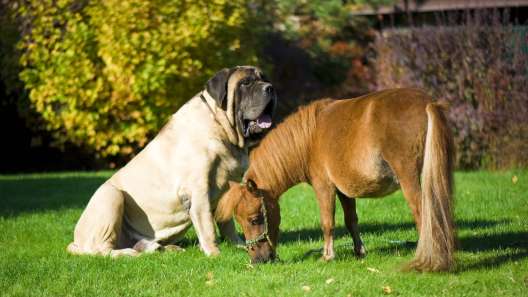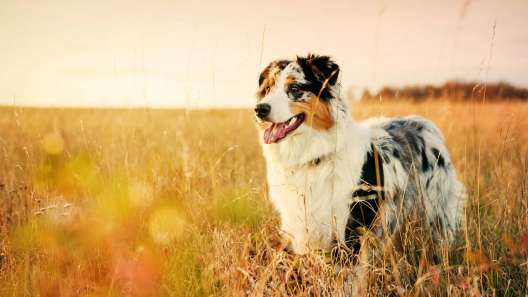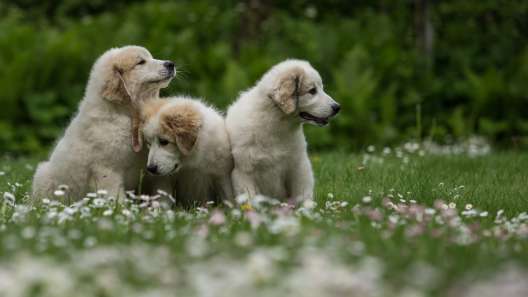-
Activity Level:
moderate
-
Shedding Level:
moderate
-
Grooming Level:
moderate
-
Trainability:
low
-
Good for Novice Owners:
low
-
Adaptability:
moderate
-
Kid/Pet Friendly:
often
-
Prey Drive:
high
-
Watchdog:
very alert
- Average Size: Large
- Average Lifespan: 10-12 years
- Registered?: aca, akc
Great Pyrenees Dog Breed Information
Overview
Temperament
Adaptability
Health
Owner Experience
Grooming
Activity Level
Size
Life Span
Did You Know?
The Pyrenees Mountains create a natural border between France and Spain. This rocky, high-altitude region is where the Great Pyrenees originated centuries ago. These large, powerful dogs were bred to protect and guard flocks against packs of wolves, bears, and other dangers to them among the freezing mountaintops. They were prized for their strength, intelligence, and seemingly endless patience and focus while working.
The Great Pyrenees, also sometimes referred to as a Pyr, is also known by a few other names like Le Grande Chien des Montagnes, Le Chien des Pyrenees, and the Pyrenean Mountain Dog. They could be found working in the mountains or sitting in court at the side of French royalty. The first Pyrs came to the United States in 1824. The AKC recognized the Great Pyrenees in 1933 as a member of the Working Group.
Although these dogs are strong and powerful, they are also known for their intelligence and calm nature. One of the facts about the Great Pyrenees is that they can be great for families. Provided they are well-socialized and trained, these dogs tend to have sweet, affectionate, and gentle dispositions that make them a great fit for families with children. They are notorious for getting along with children and other pets in the family.
Great Pyrenees are natural guardians and protectors with working dog backgrounds that also tend to be fairly mellow family companions. This means that they can also be territorial. Because of their protective nature, they are usually initially wary and suspicious of strangers who enter what they consider their territory. But, a well-socialized Pyr will welcome them graciously to your home, as long as they were invited.
These are large dogs that are built to roam. Because of that, they do not tend to be a good fit for apartments. They are best suited to larger homes with securely fenced-in yards where they can be off-leash. Without a secure fence, they should not be allowed to roam off-leash as they will wander off, patrol, and attempt to expand their territory.
The Great Pyrenees was built for cold weather, so they thrive in the cold and are one of the dog breeds that love winter. However, they are sensitive to heat. Great Pyrenees are also independent dogs that are used to working alone and without guidance.
In fact, they are considered one of the most independent dog breeds because they can do a job essentially on their own. As long as they have enough exercise and a job to do, they don’t need to be attached to your hip at all times. This does not mean that you should leave them alone for long periods of time. They can become destructive if they are permitted to get bored.
The Great Pyrenees is a relatively healthy dog breed. As with any dog breed, there are potential health conditions to be aware of that can affect the breed. With the Great Pyrenees, potential health concerns can include hip dysplasia, elbow dysplasia, patellar luxation, eye disorders, and certain types of cancer. Good breeding practices and healthy parents make a big difference in the health of Great Pyrenees puppies.
Reputable breeders will screen test and screen their dogs to reduce the chance of passing on these types of health conditions. So, don’t be afraid to ask the breeder about the genetic history of the parents and to see any relevant health clearances or test results. The Great Pyrenees Club of America recommends a patella evaluation and a hip evaluation at a minimum.
Additionally, as a large dog breed, the Pyr can be prone to bloat. Bloat in dogs can be dangerous and quickly becomes fatal if the stomach twists and flips. This is called gastric torsion and requires immediate medical intervention. Because of this, it’s important to know how to reduce the risk and what signs to look out for so you can get help as soon as possible.
The Pyr is an independent dog breed and is used to working without guidance. Although they are highly intelligent and understand standard obedience perfectly, they often get bored and don’t see the point of basic commands. So, if you ask them to “sit”, “stay”, or “heel” during a training session, they may be slow to respond simply because they are indifferent.
This stubborn, strong will and independent nature tend to make this dog breed a better fit for more experienced owners. It’s still important to start socialization early and to enroll in puppy training classes. Even if the Great Pyrenees won’t see much point in performing tricks later in life, training and socialization early on sets them up to be a well-behaved and well-rounded dog.
The Great Pyrenees stands out due to their large, powerful frame and thick, fluffy white coat. Although this dog breed is a fluffball, their weatherproof double coat is relatively low maintenance. But, they will shed year-round. Their undercoat is soft while their outer coat is longer, and the undercoat will shed more heavily as the seasons change.
The Great Pyrenees coat is naturally resistant to collecting dirt and tangles. Brushing their coat on a weekly basis or a few times a week is usually sufficient to remove loose fur and help to control shedding. Upping this to a few times a week or daily during heavier shedding sessions will help control the excess loose fur. After all, if most of it is contained in a dog grooming brush, less of it ends up all around your house. Regular brushing plus the occasional bath will keep the famous Pyr coat healthy and looking great.
In addition to coat care, you will also need to care for your Pyr’s nails, ears, and teeth. Overly long nails can cause your dog discomfort, but once or twice monthly nail trimming is usually sufficient to keep them from growing too long. You also want to make sure to check your Pyr’s ears regularly to make sure they are clean, free of debris, and dry. Regular ear checks with careful cleaning as needed can help prevent ear infections.
It’s also important to practice good dental care for dogs. Ideally, this includes brushing your Great Pyrenees’ teeth or using an enzyme toothpaste every day in addition to cleanings at the vet when needed. This can help reduce the tartar and plaque buildup that leads to painful dental diseases.
Although the Great Pyrenees is a strong working dog, they don’t share the high energy requirements of many other working dog breeds. Moderate exercise is enough for this dog breed. They will definitely give it their all while working or playing, but will be happy with their daily walks with some extra activity with their favorite humans.
As one of the sturdy dog breeds for outdoor adventures, you can try a lot of activities with your Pyr once they are fully grown. Once their bones are done developing, you can try hiking and other activities, or even dog sports. These dogs tend to be a great fit for cart-pulling events and obedience trials.
Great Pyrenees are one of the largest dog breeds in the world. Fully-grown Great Pyrenees usually stand 25-32 inches tall and weigh 85-150 pounds on average.
Some can weigh even more than that, especially males. For the Pyr, the average weight is usually better described as females weighing 85 pounds and up while males weighing 100 pounds and up.
Great Pyrenees generally live for 10-12 years on average.
Fossilized remains of this dog breed have been found dating as far back as the Bronze Age around 1800-1000 BC.









